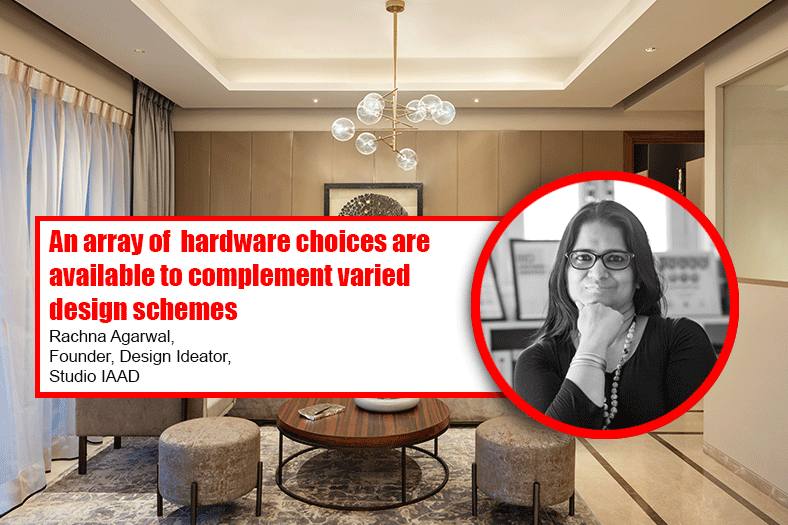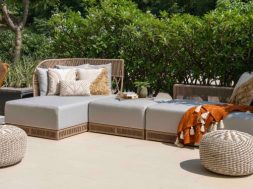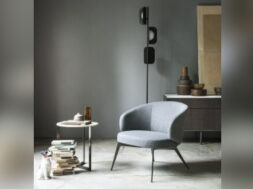An array of hardware choices are available to complement varied design schemes

The primary step entails the selection of the door and window typology based on which hardware choices are introduced into the equation says Rachna Agarwal, Founder, Design Ideator, Studio IAAD.
What are the key elements to consider when selecting hardware for doors and windows?
Hardware is used ubiquitously across spaces; in tandem with the design, narrative adds the element of nuance to a palette. What may come across as embellishments in demeanour, actually anchor a large function of durability and pragmatic usage. Depending on the type of doors and windows, their respective functions and their presence in a spatial layout, the hardware requirement can vary greatly.
Hardware choices are available to designers and end-users in a plethora of materials, each complementing an array of design schemes. Hence, the primary step entails the selection of the door and window typology based on which hardware choices are introduced into the equation.
Quality control and checks are of utmost importance, in the light of which hinge and joinery strengths are scrutinised. Doors, for instance, should not have complicated hardware; here the facet of accessibility and ease of function takes precedence.
Hardware selection also plays a vital role in the aspect of sound insulation; good-quality hardware will ensure there is an elimination of unnecessary sounds and noises created while operating the openings. Additionally, the installation of security-based elements like wire mesh etc. over doors and windows may also influence the selection of related hardware.
What are the different kinds of sliding doors one can put to good use in a balcony? (lift and slide, parallel slide, shift and slide etc.)
The inclusion of sliding doors in the design scheme of space renders it with a sense of spaciousness and expanse whilst creating a demarcation between various zones seamlessly. Sliding doors offer visual connectivity while ensuring a separation between the interior and the exterior without the visual weight.
The factors that may influence the choice of sliding door typologies may depend on several considerations such as the size of the opening. The size of the door or the window is crucial as based on that one ascertains the employment of a lifter slide, parallel slide or a conventional slide. It is necessary to understand how many channel slides will be installed in a door and a window to carry out the targeted function.
Another important aspect to take into account, especially in India is the installation of a wire mesh from the environmental and security aspects. The cardinal orientation of the opening of doors and windows decides the specification of glass – be it transparent, translucent, frosted etc.
What is your take on self-cleaning glazed doors?
For what kind of projects will you deem them to be suitable? Self-cleaning doors are an investment of sorts as they rid the users from the task of maintaining the doors while offering uninterrupted views of space. This self-cleaning type glazing becomes vital for areas wherein access for maintenance is challenged — for example, there is no balcony/access space attached to that particular glazing.
Another type of window system that is gaining wide popularity is the system wherein the homeowner does not need to necessarily open the window for air circulation at all. The circulation is a part of the profile system of the designed window, allowing ventilation to become an intrinsic part of the designed fenestration.
This also ensures the security of the space and is typically used where wire mesh is not installed. A company called ‘Schüco’ is offering such an application and it has a myriad of utilities in its scope of application.
When it comes to fire doors in NFPA compliant buildings what kind of doors need to be used, what are some of the other factors which matter in this case?
The regulations under the guideline of the NFPA modulate the stability, integrity and insulation of devices that prevent the spread of fire and smoke in the event of an emergency.
Usually, for commercial projects of larger scales, metal doors are used as fire doors to contain and compartmentalise the spread of flames and smoke — creating a barrier of safety to support fire-fighting and evacuation activities. However, for residential projects, we prefer to install wood fire doors, instead of metal fire doors. These are durable and low on maintenance fixtures that respond to the needs of residential space.
How does window frame material influence the window’s overall energy efficiency?
The energy-efficiency of a window is codependent on the type of window installed, the function it serves and its contextual presence to the layout and site alike. Particularly, in aluminium systems, the frames have in-built systems where there is a thermal break. In such systems, the transfer in energy is minimised. These can often be of very high quality but come with the facet of increased expenditure and may not be the most viable option at hand.
Double glazed (DGU) windows are an ideal energy efficient choice with the added benefit of minimising noise and increased insulation. This added thermal resistance reduces the heat escape in the winters and keeps spaces at an optimum temperature. Laminated glass in tandem with frames also creates an integrated energy-efficient system with its varied applications.
Wood, fiberglass or vinyl which windows according to you are best when it comes to energy efficiency and why? Keeping in mind the parameters of cost effectiveness, energy-saving, longevity, and sustainability, we ideally prefer to use aluminium as a material for windows across our projects ranging various typologies.
However, if the client has a higher material procuration budget and desires a warmer look and feel, then we also resort to using aluminium sections that are available in wooden finishes — achieving the desired look while tapping into the resistant properties of aluminium.
4
Cookie Consent
We use cookies to personalize your experience. By continuing to visit this website you agree to our Terms & Conditions, Privacy Policy and Cookie Policy.









